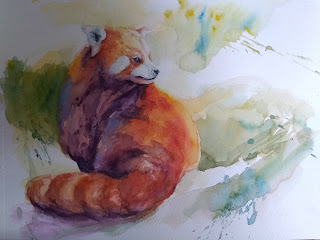How we learn through collaborative media production
Recently my head spins around how we learn when members of a community participate and collaborate to produce a collective media project. I attempt to break down into two fundamental different modes of knowledge production.
First a new level of knowledge can be obtained by juxtaposing individual knowledge or experience with one another or putting them altogether. A video made by community members in New Orleans is a good example. A member in the video shows a big list where all the people in the city were murdered are written since January 2007. The list itself is a kind of collaborative media project that brings dispersed experience/knowledge together and the video disseminates the collective knowledge created through the list-making project. This is a powerful process of collective knowledge production.
The second mode I intend to formulate takes the opposite direction in a sense. In this mode, new knowledge can be produced by turning the familiar into the unfamiliar. In other words, by recontextualizing common knowledge, we may see the familiar domain from a different angle and learn a new level of the common knowledge. One example is found in a participatory video made by youth groups in South Africa. In their discussion, they already knew that gender violence was the most problematic at school and decided to make a video on the topic. In this case, they did not learn a new fact by making the video, but instead they saw the fact in a new way and possibly a more action-provocative way.
The two modes, despite the differences between each other, remind me of Brecht’s distancing effect. He defines this effect as a theoretical or cinematic device that keeps audience’s critical consciousness by preventing them from being involved with actors and actions that takes place on the stage or on the screen. I need some deeper thought to articulate this effect in relation to the two ways of learning mumbled above.
First a new level of knowledge can be obtained by juxtaposing individual knowledge or experience with one another or putting them altogether. A video made by community members in New Orleans is a good example. A member in the video shows a big list where all the people in the city were murdered are written since January 2007. The list itself is a kind of collaborative media project that brings dispersed experience/knowledge together and the video disseminates the collective knowledge created through the list-making project. This is a powerful process of collective knowledge production.
The second mode I intend to formulate takes the opposite direction in a sense. In this mode, new knowledge can be produced by turning the familiar into the unfamiliar. In other words, by recontextualizing common knowledge, we may see the familiar domain from a different angle and learn a new level of the common knowledge. One example is found in a participatory video made by youth groups in South Africa. In their discussion, they already knew that gender violence was the most problematic at school and decided to make a video on the topic. In this case, they did not learn a new fact by making the video, but instead they saw the fact in a new way and possibly a more action-provocative way.
The two modes, despite the differences between each other, remind me of Brecht’s distancing effect. He defines this effect as a theoretical or cinematic device that keeps audience’s critical consciousness by preventing them from being involved with actors and actions that takes place on the stage or on the screen. I need some deeper thought to articulate this effect in relation to the two ways of learning mumbled above.


Comments